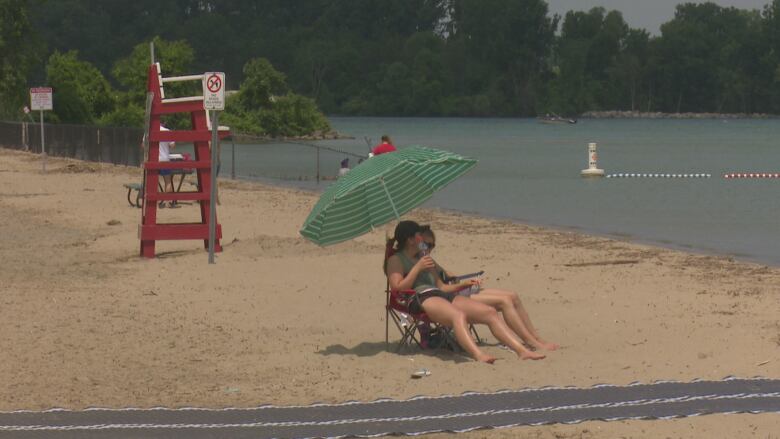Beach closures mean unsafe sand too, says water quality specialist
E. coli and bacteria can thrive in the sand, even after the water recedes from the shore

If you hear the water is not safe for swimming at a local beach, it might be a good idea to stay away from the sand too.
This past week, the Windsor-Essex County Health Unit closed Colchester Beach in Essex and Sandpoint Beach in Windsor because of high levels of E. coli in the water.And swimming is not recommended at West Belle River Beach, because bacteria levels there are above acceptable standards.
"Sometimes, you have more E.coliin the sand than actually in the water," saidRajBejankiwar,a water quality specialist with the International Joint Commission, an organization that monitors waters between the U.S. and Canada.
"The irony is kids, they play in the sand more than they play in the water. That's why it's really important to manage beach management."
Bejankiwar said that when tides are high, water contaminated with bacteria seeps into the sand. He said the moist sand creates and optimal breeding ground for the bacteria to thrive.
"There are so many studies showing there are higher levels of E. coli in the sand than in the water."
Some beaches worse than others
Bejankiwarhas been monitoring the areas beaches for about 15 years. He's noticed more frequent closures due to E. coli and bacteria, which forms due to green algae, in the last five years.
"Each beach has its own profile and characteristicsdepending on what kind ofwatershed it's near," saidBejankiwar. "For example, if you're downstream from a sewer system plant, there might be more frequent closures."

SandpointBeach in Windsor, for example, is often contaminated because of these sorts of conditions.Bejankiwar said the watershed is affected by septic tanks, pet waste, and sea gulls and geese all of which contribute bacteria that can gatherin the water along beaches.
But there are ways to limit the problems.Bejankiwarsaid septicowners should monitor their tanks frequently and make sure there are no leaks. Pet owners should also make sure to pick up after their animals and dispose of waste properly.
Swimmers should wait 30 to 48 hours after a storm before they go swimming, and "clear water" is a sign it might be safe.
The health unit monitors beaches weekly, and information is updated on their website for any closures or safety risks.












_(720p).jpg)


 OFFICIAL HD MUSIC VIDEO.jpg)
.jpg)



























































































